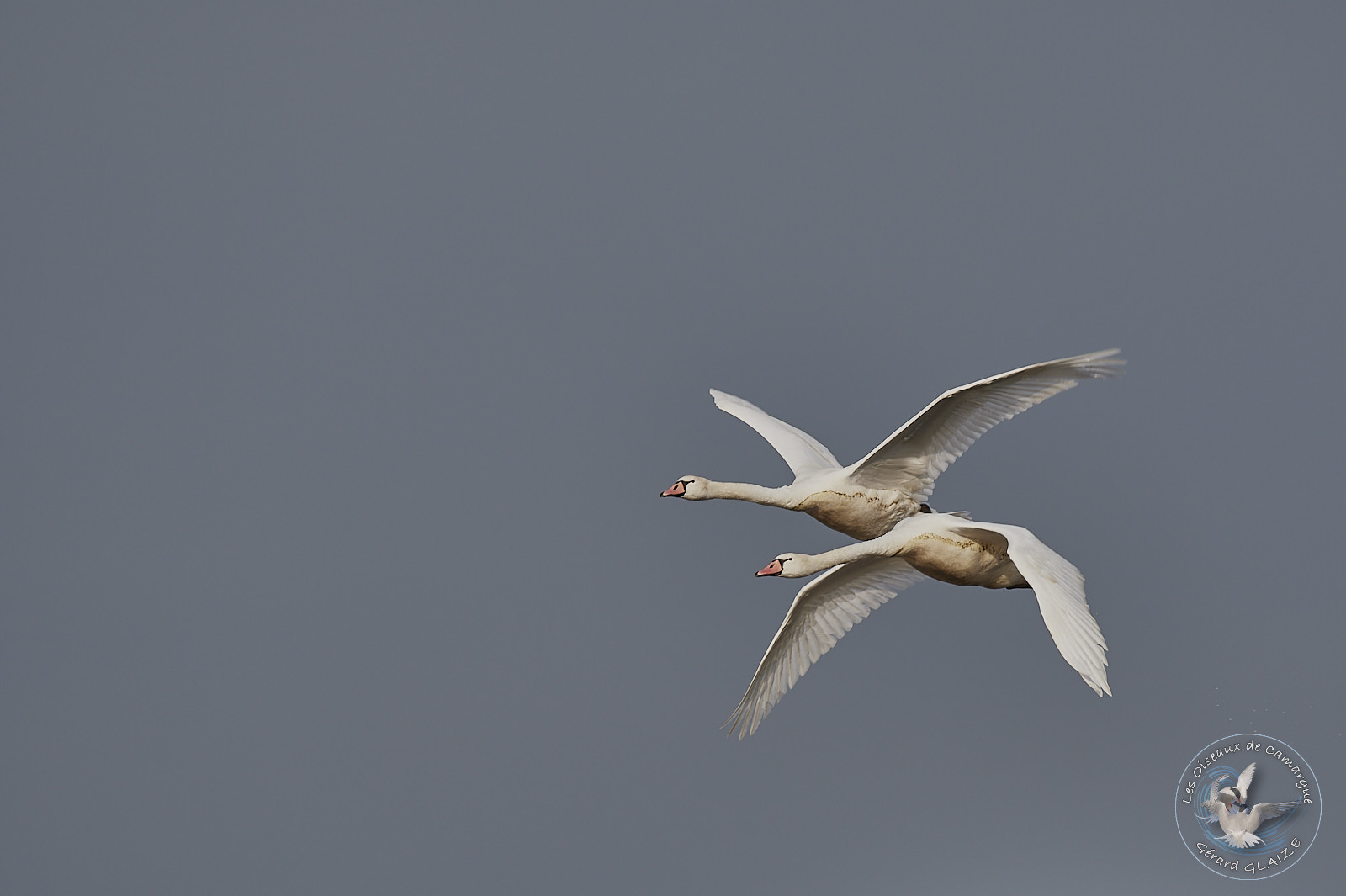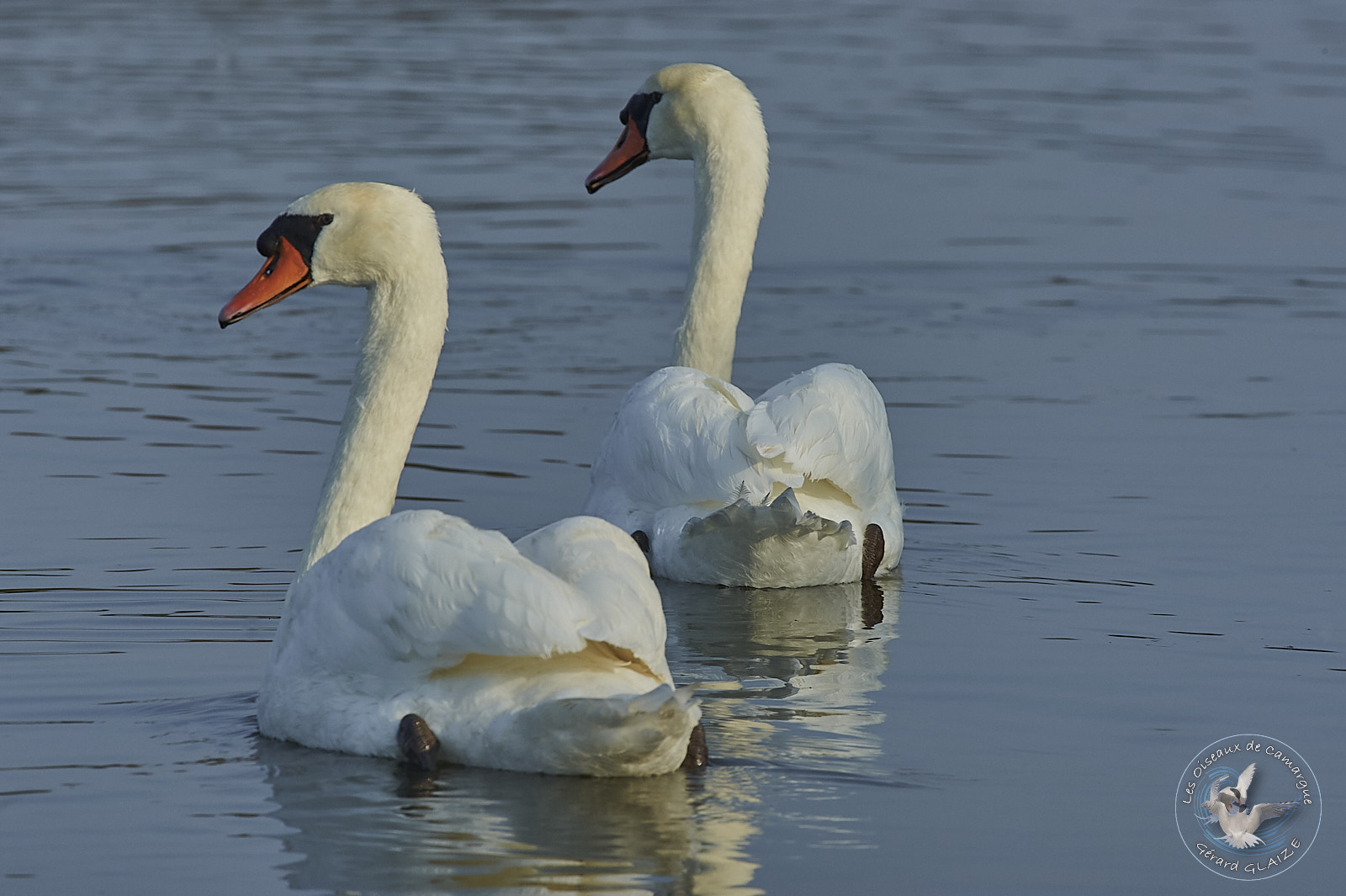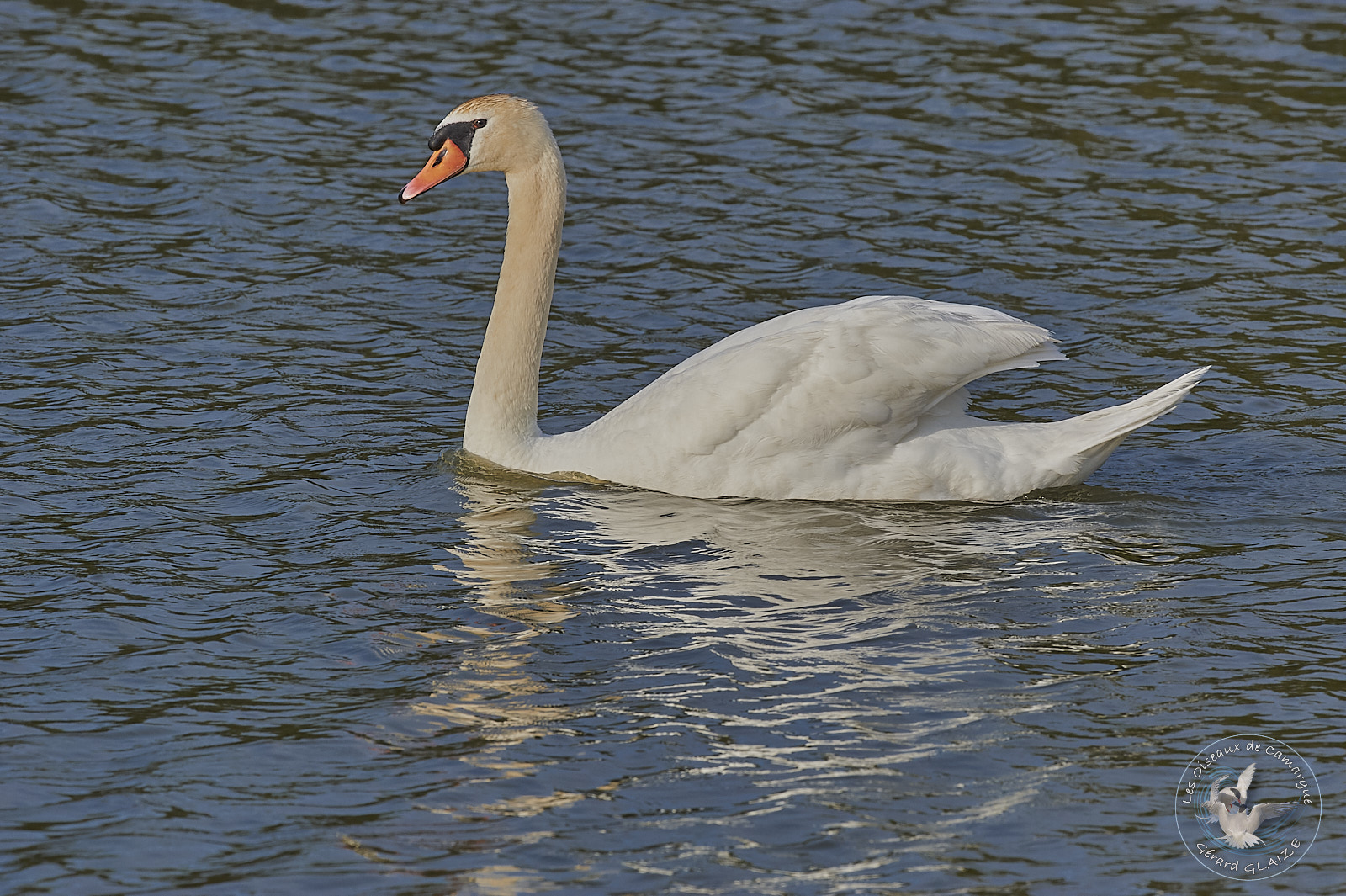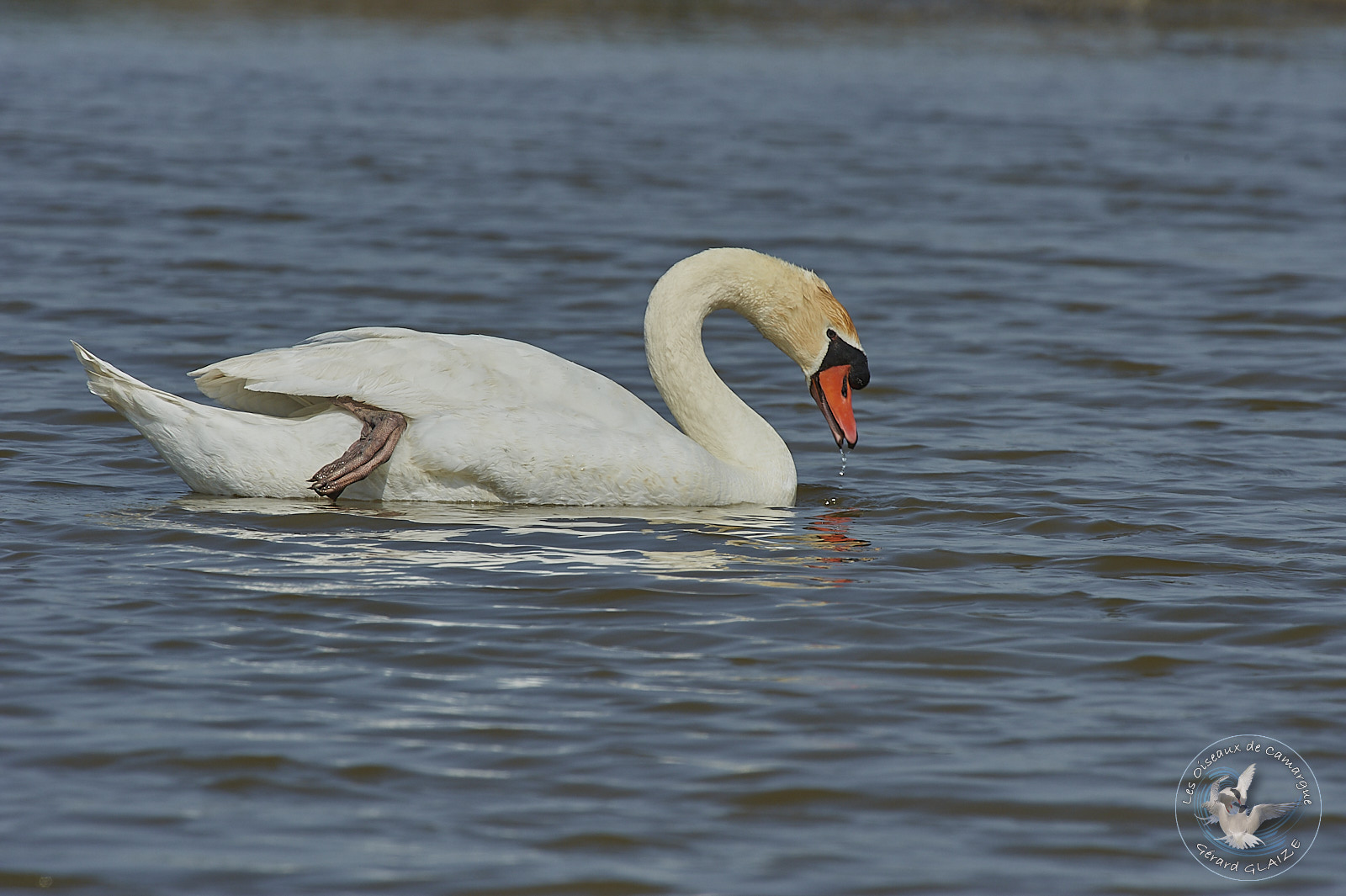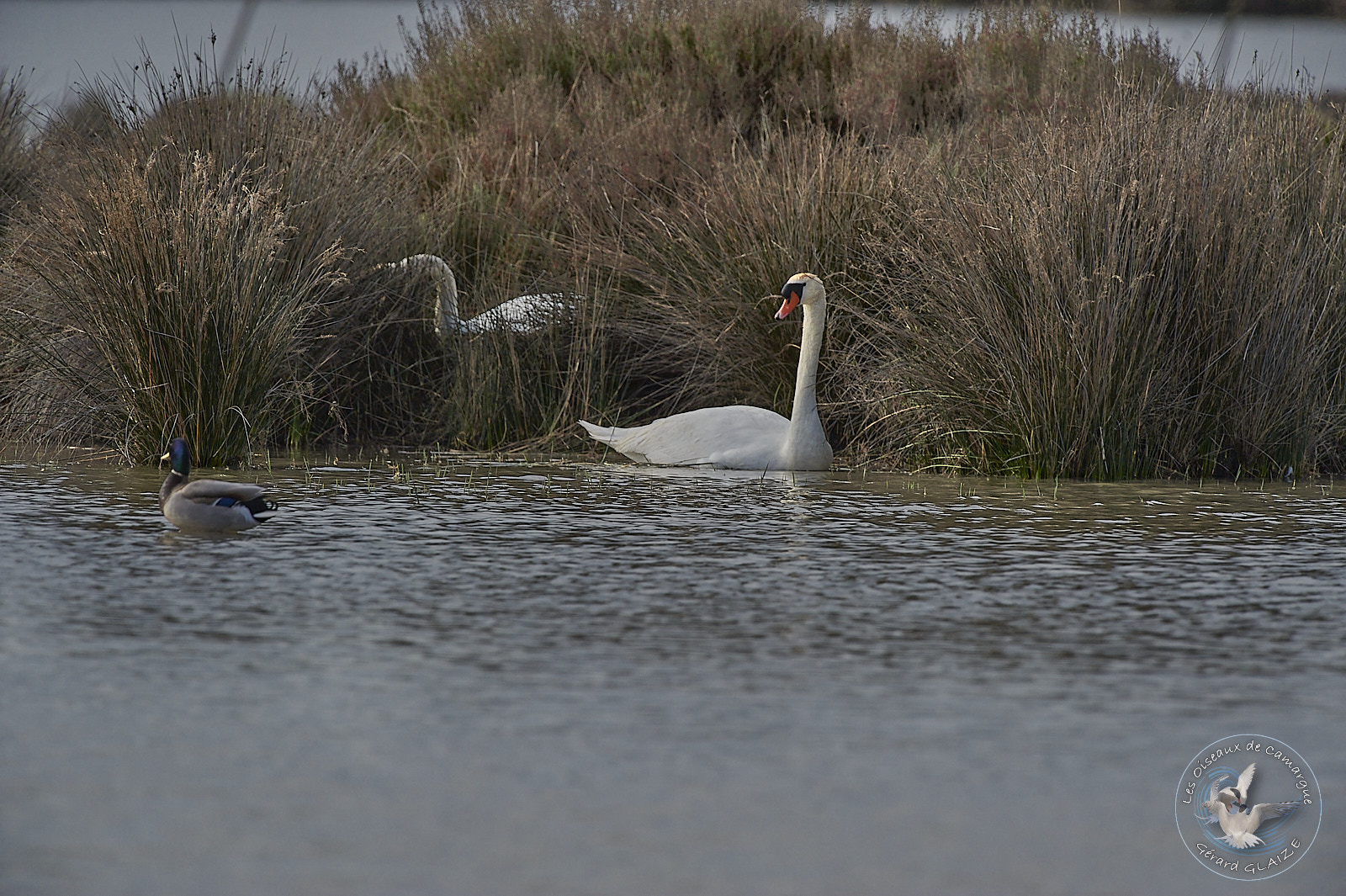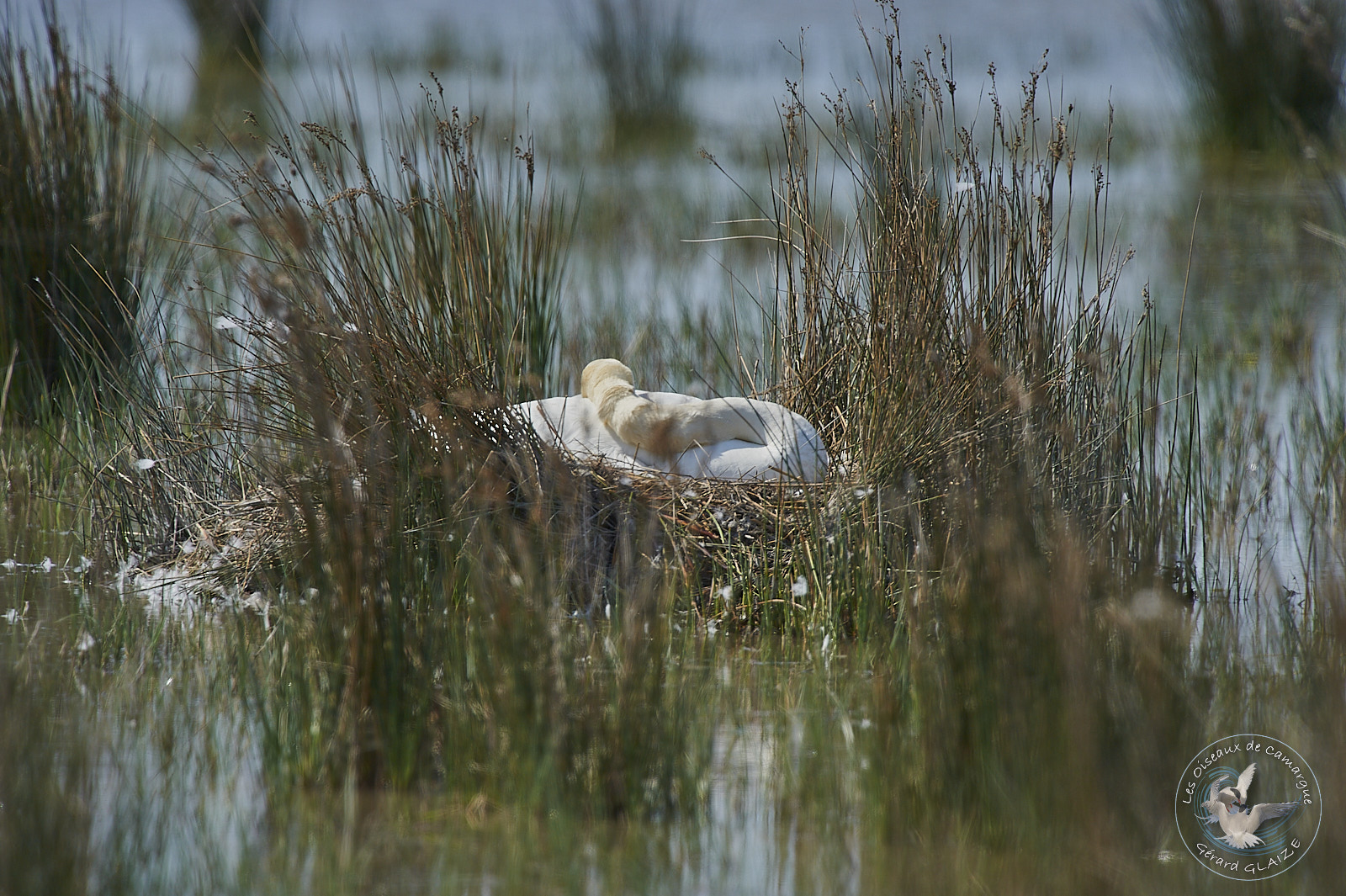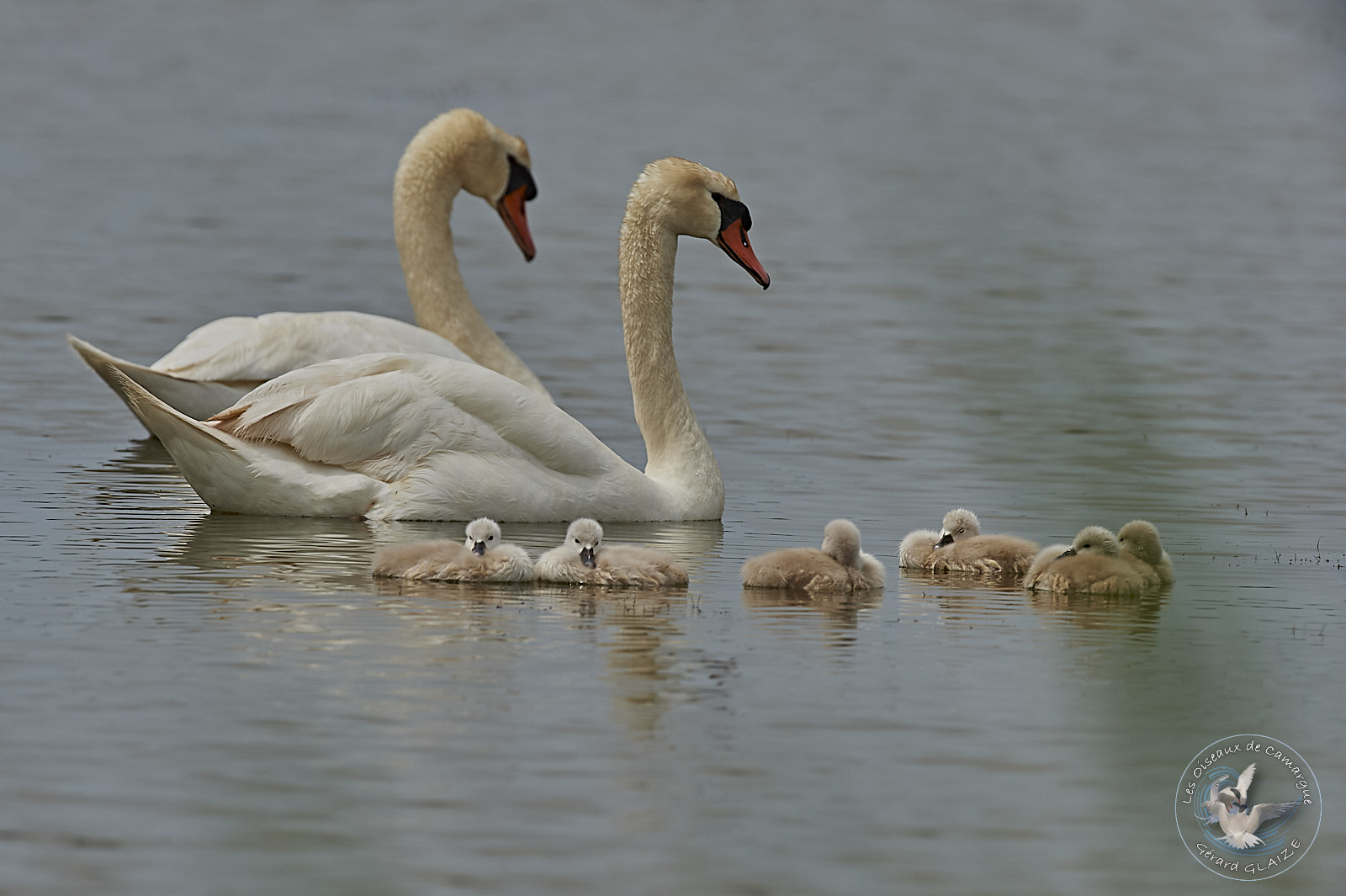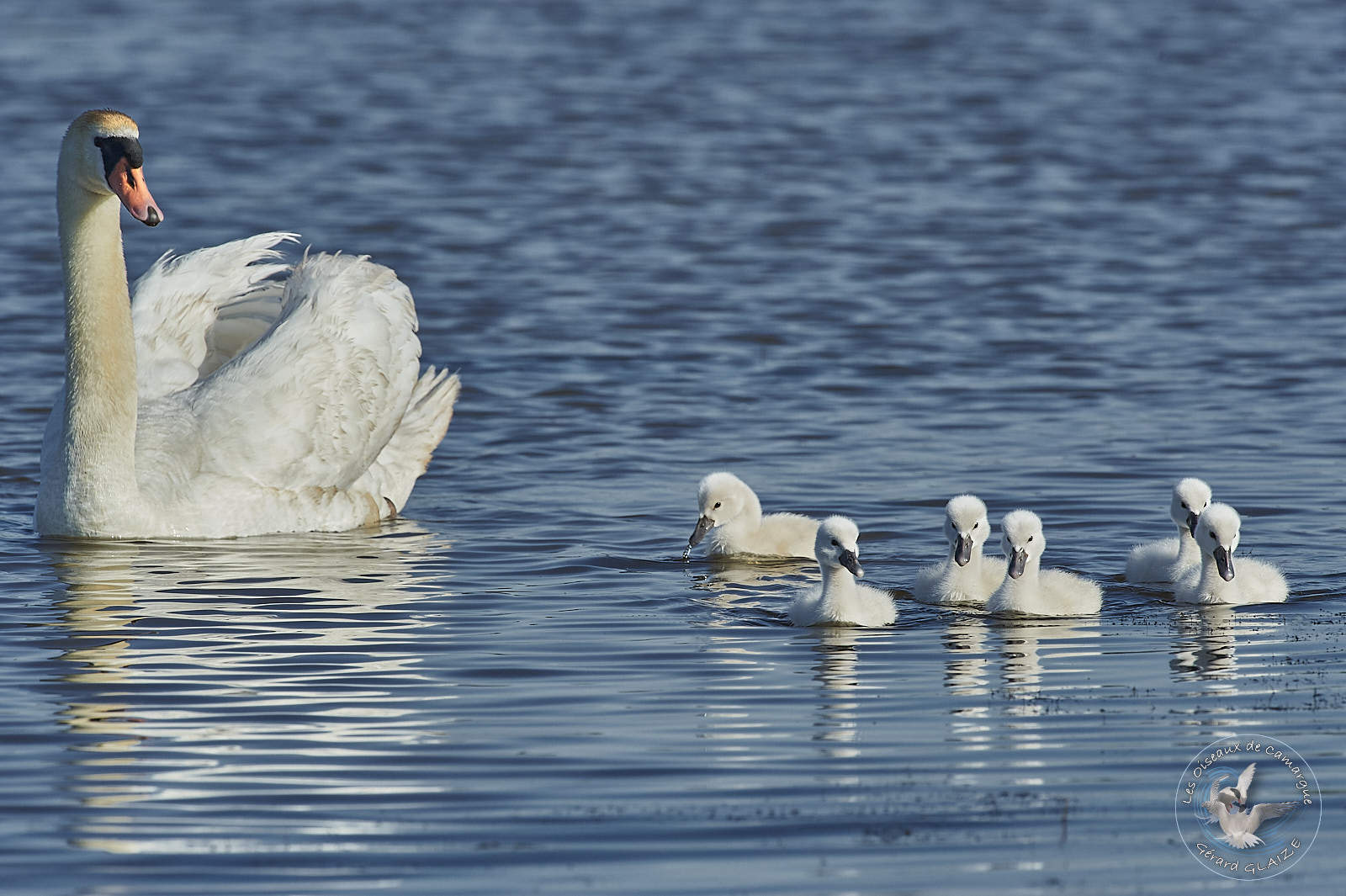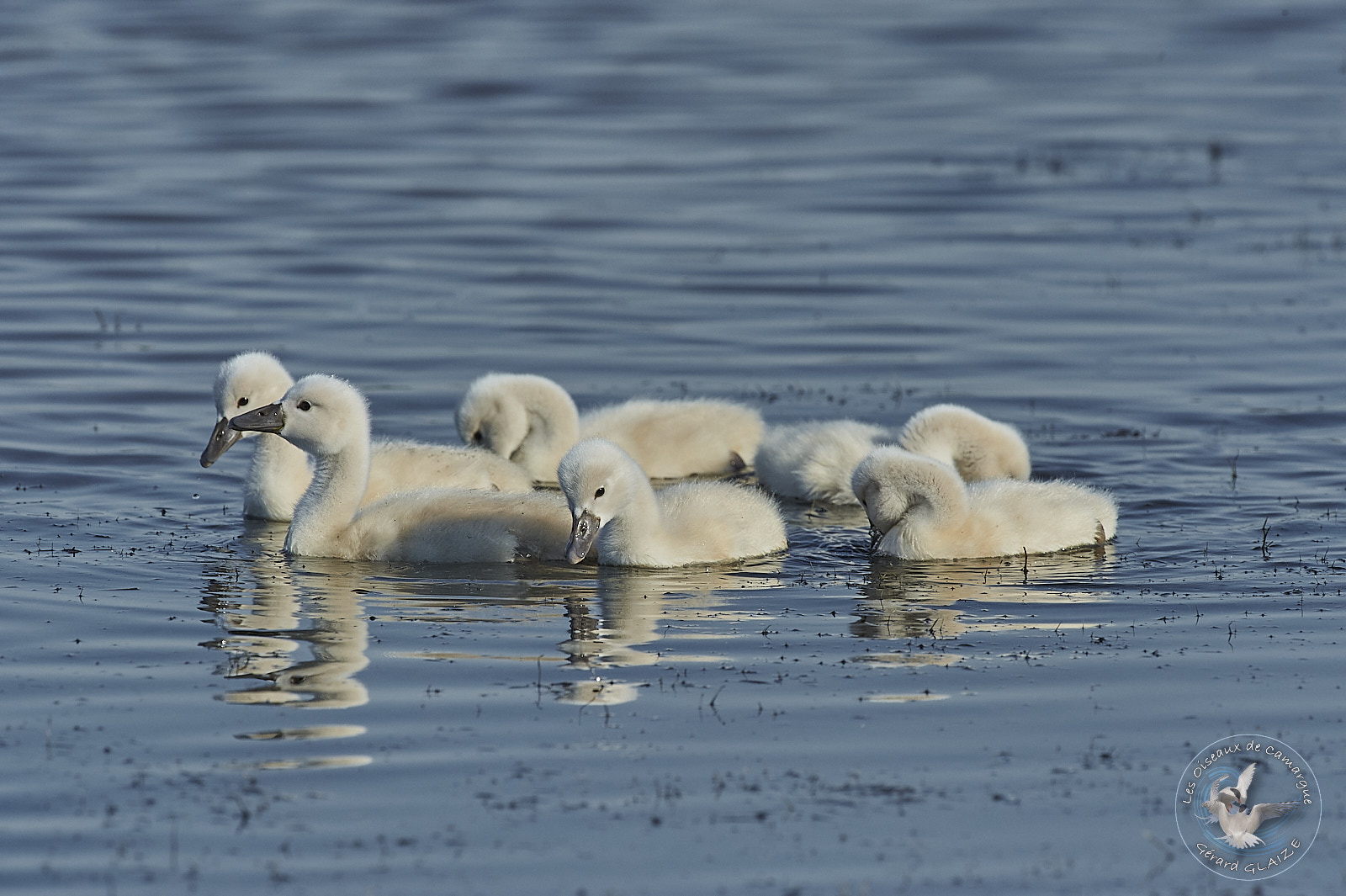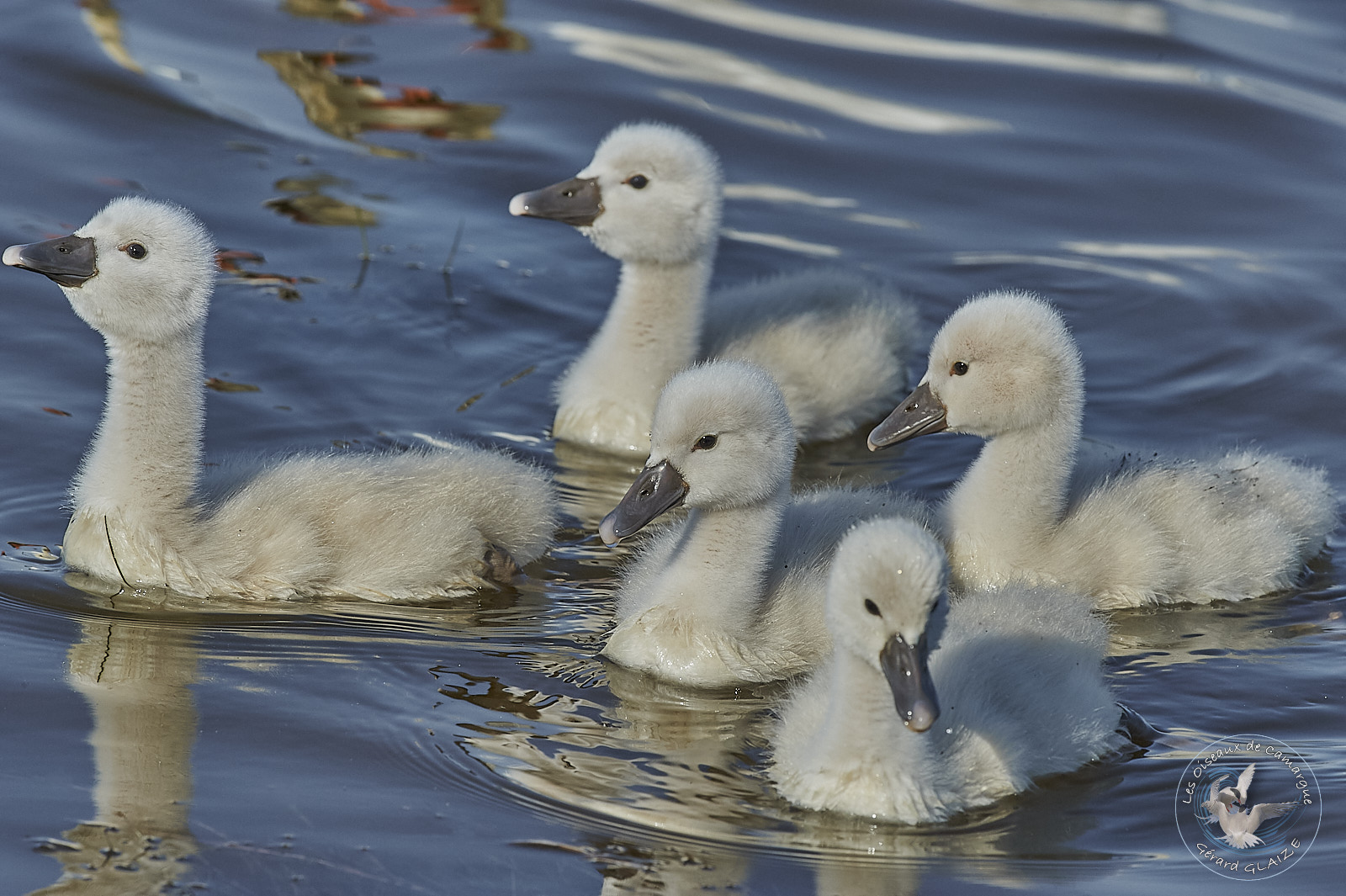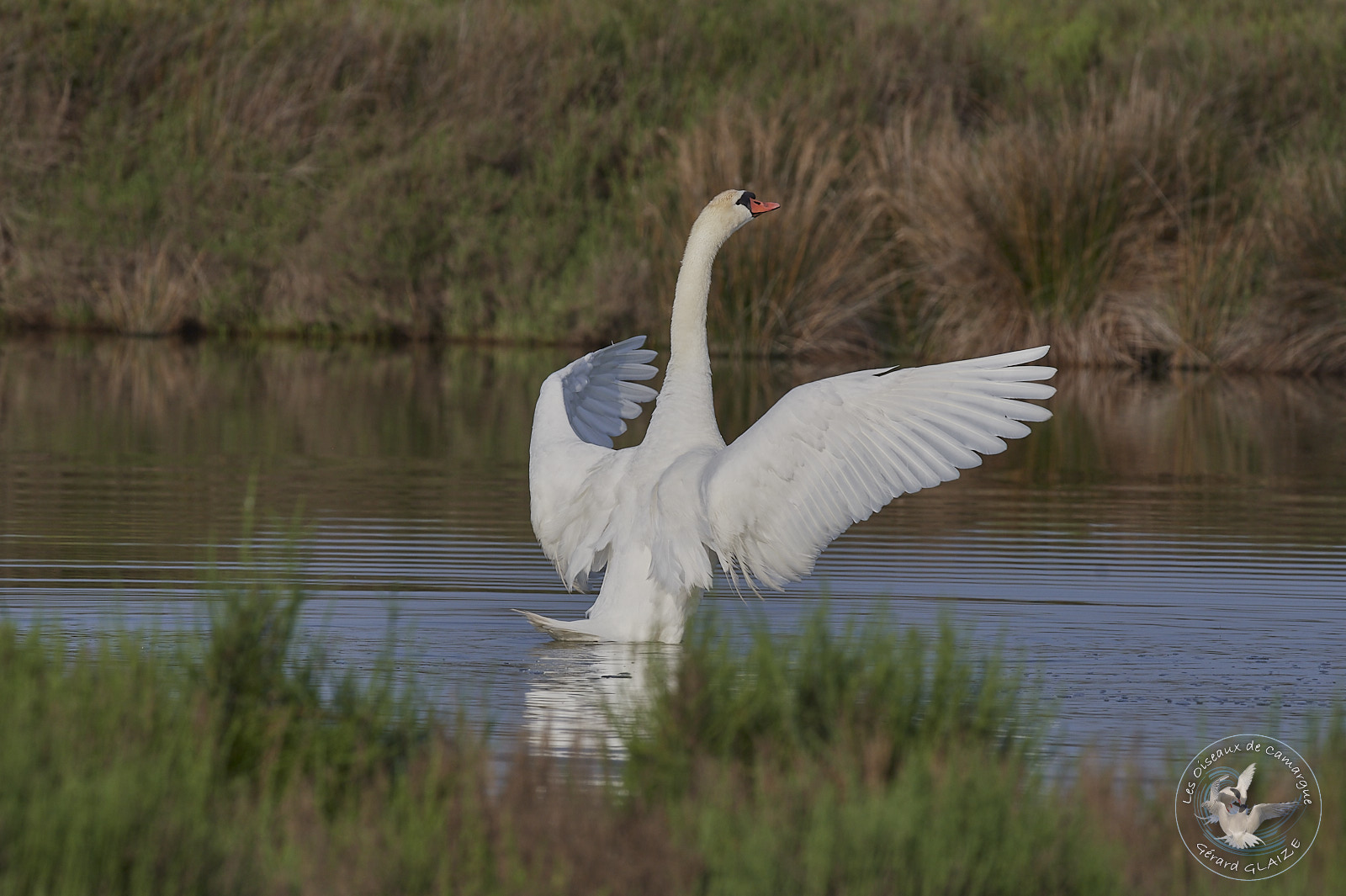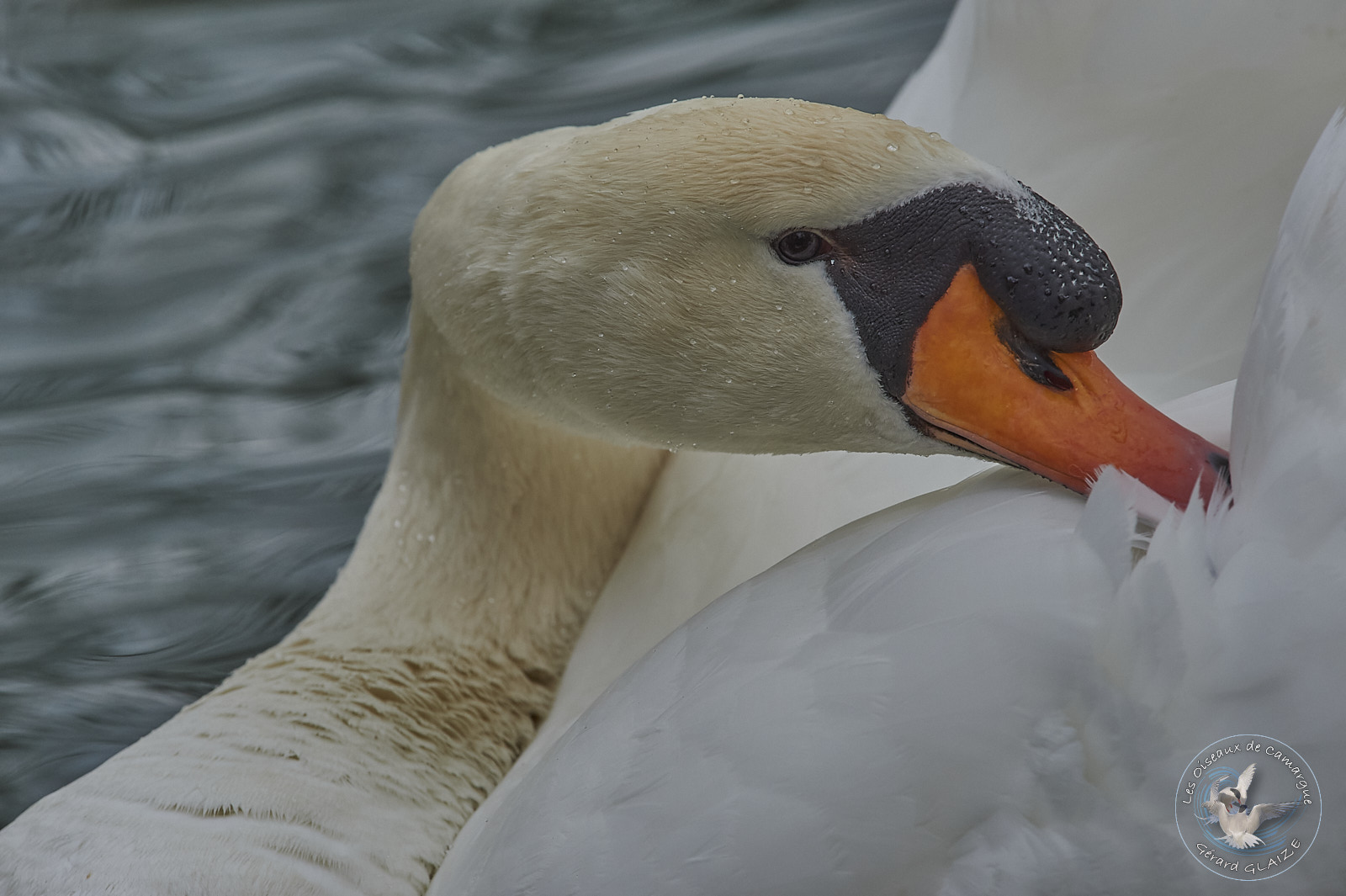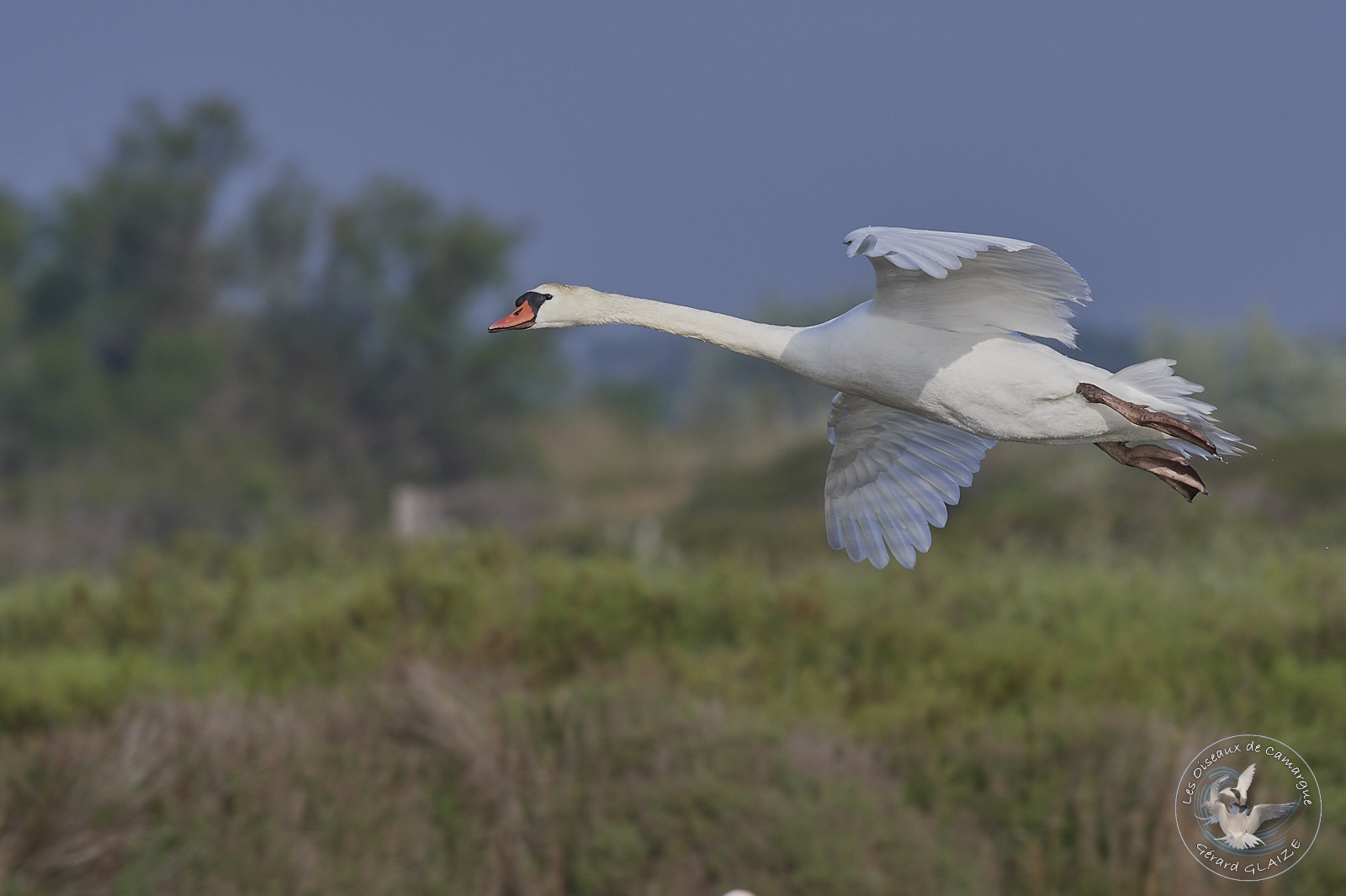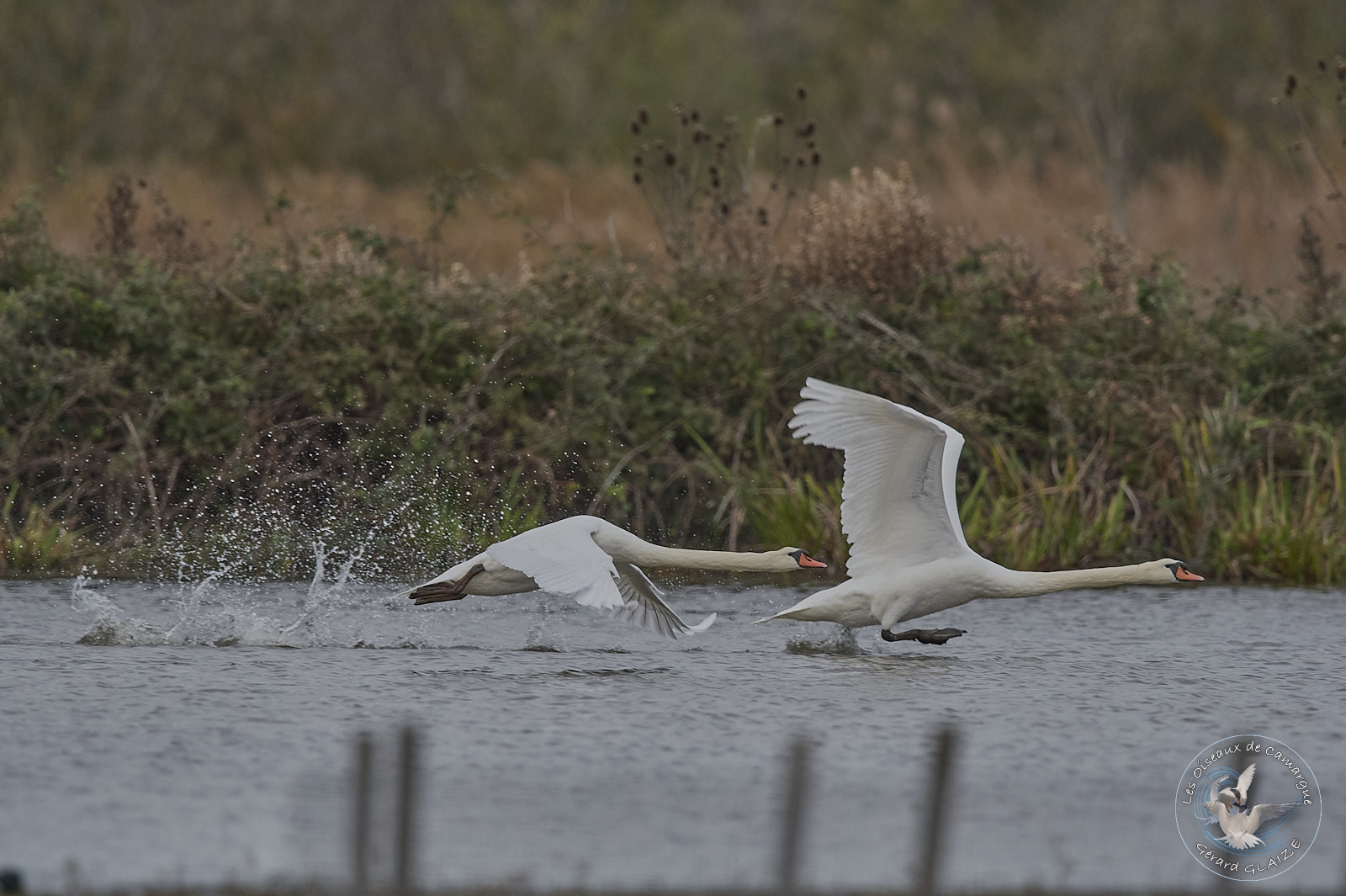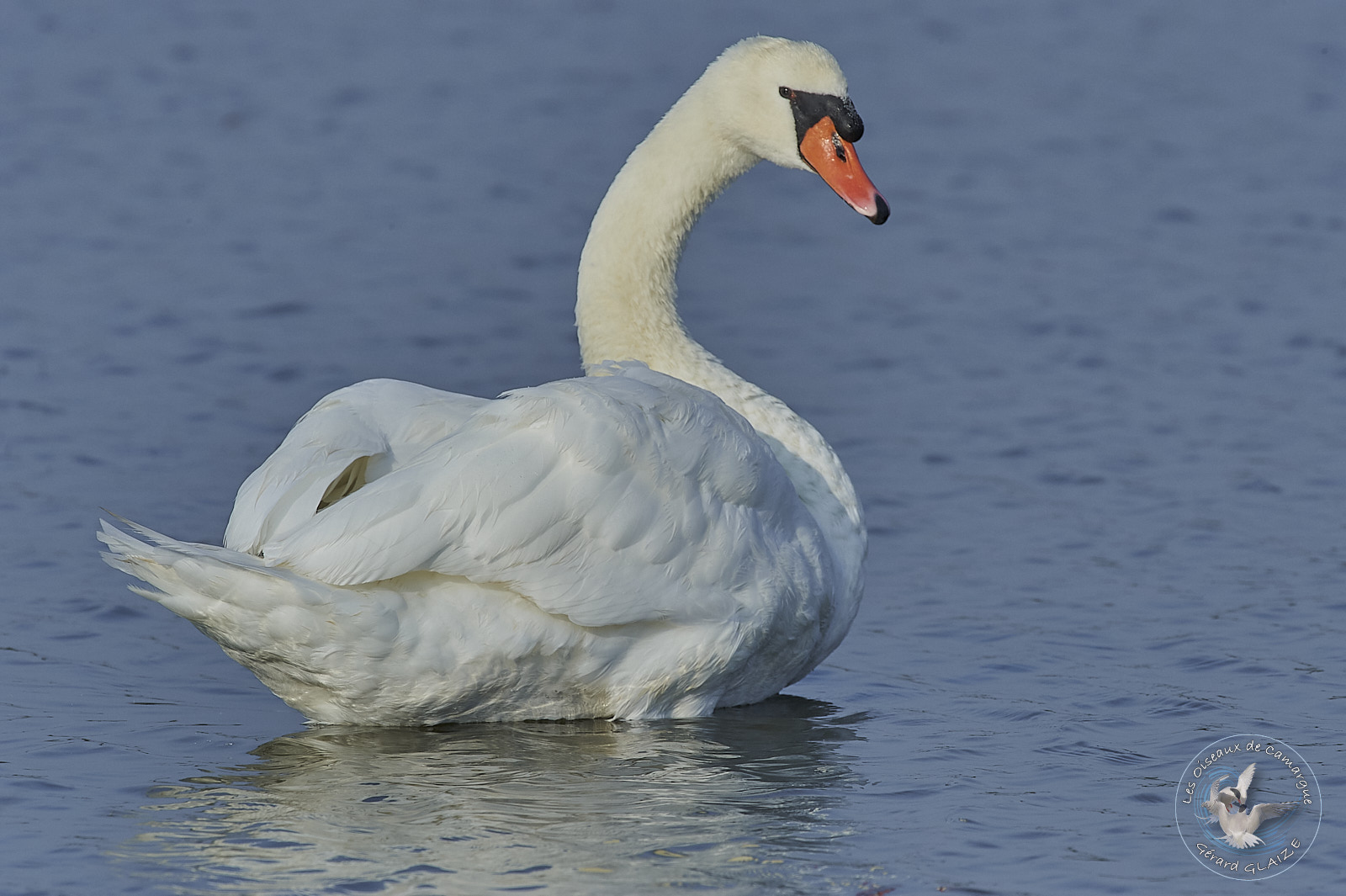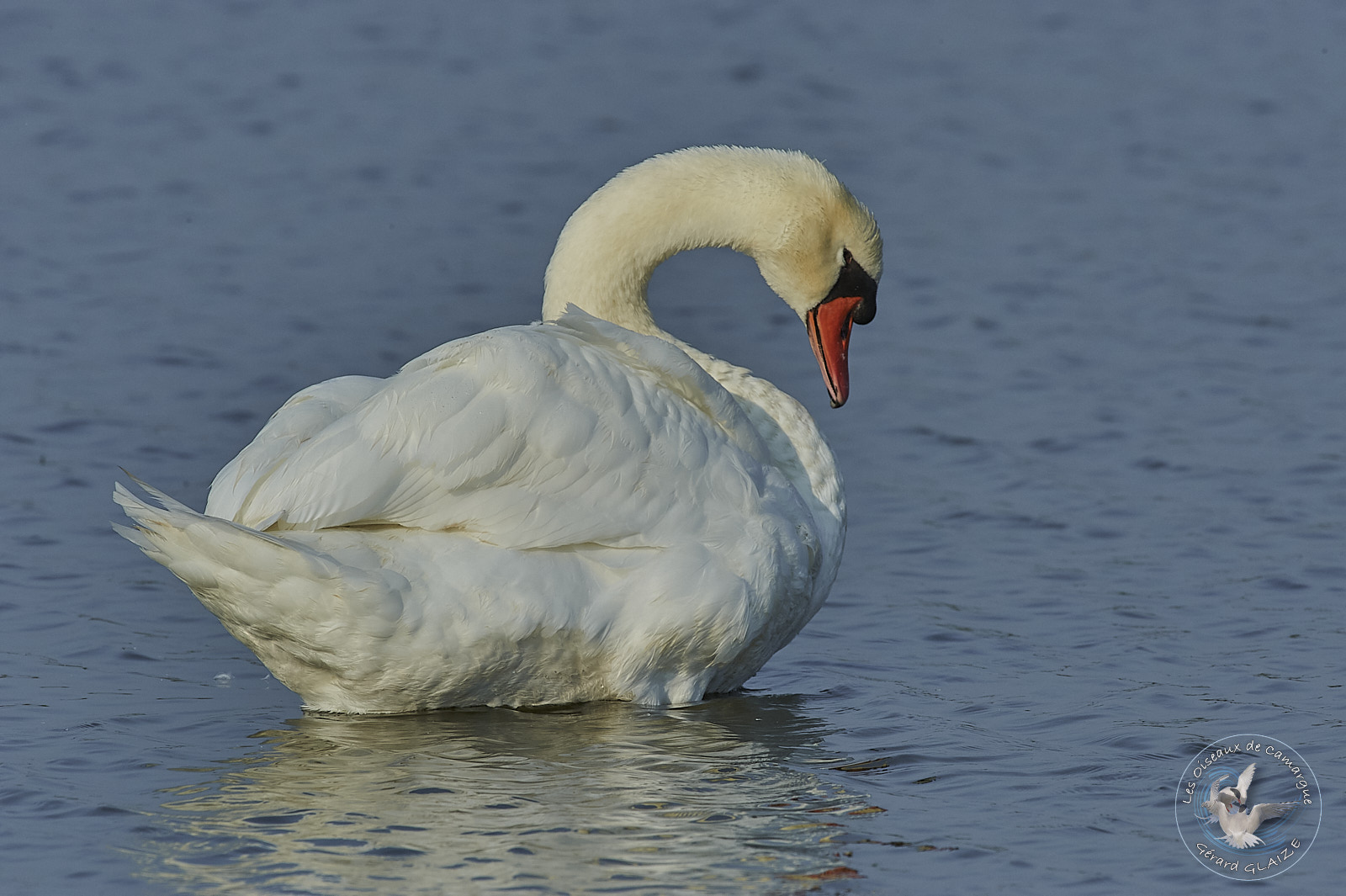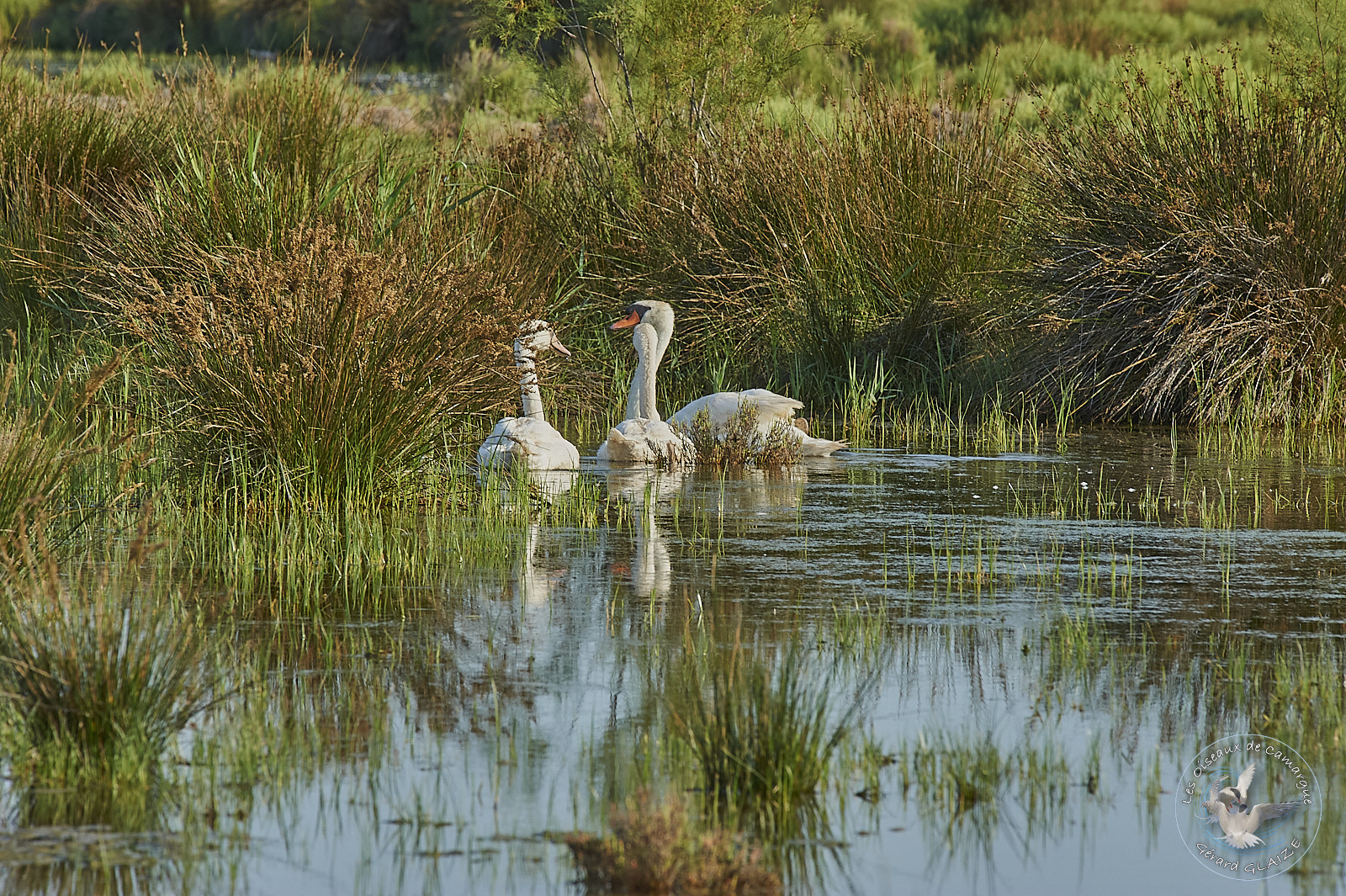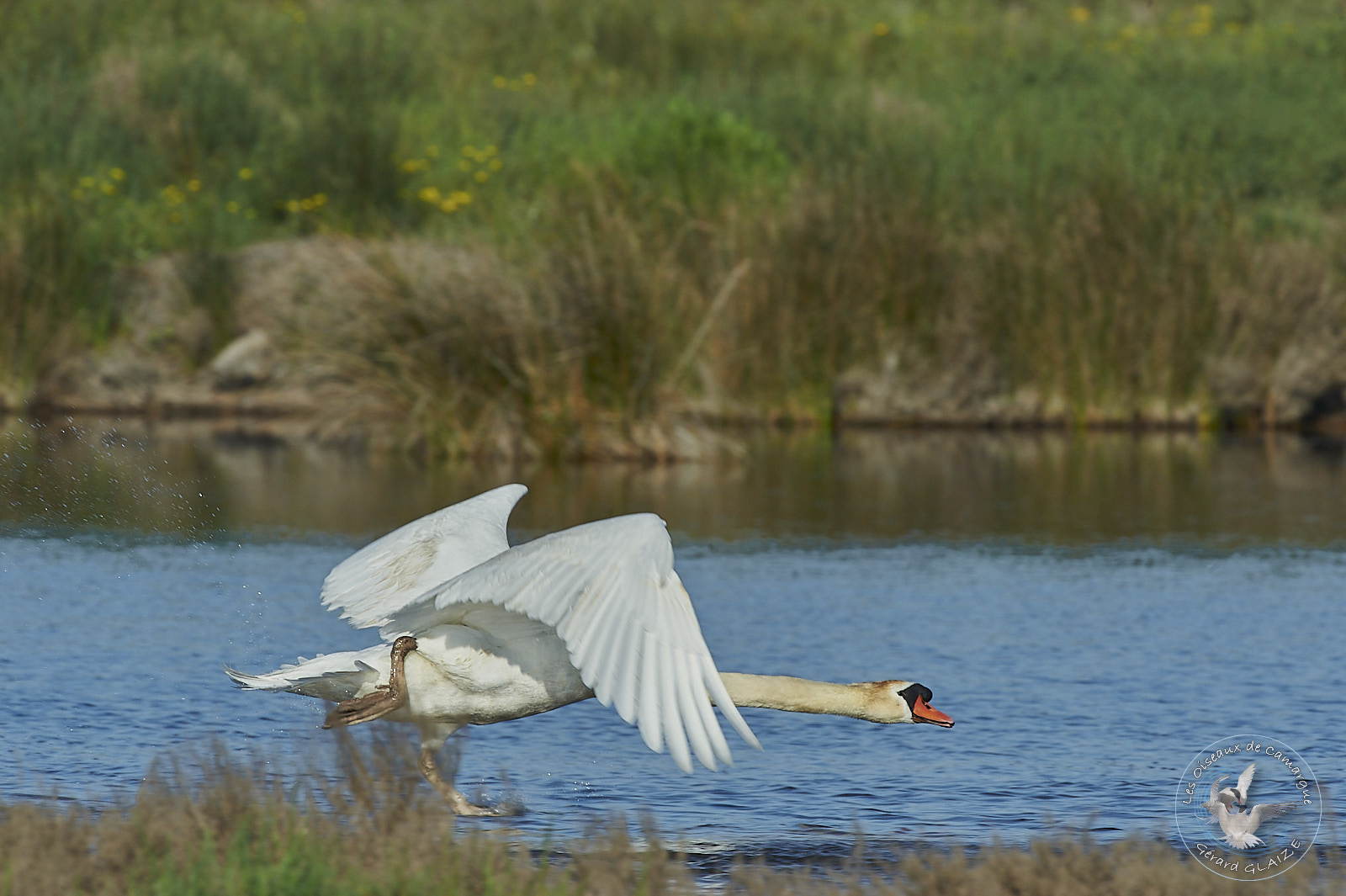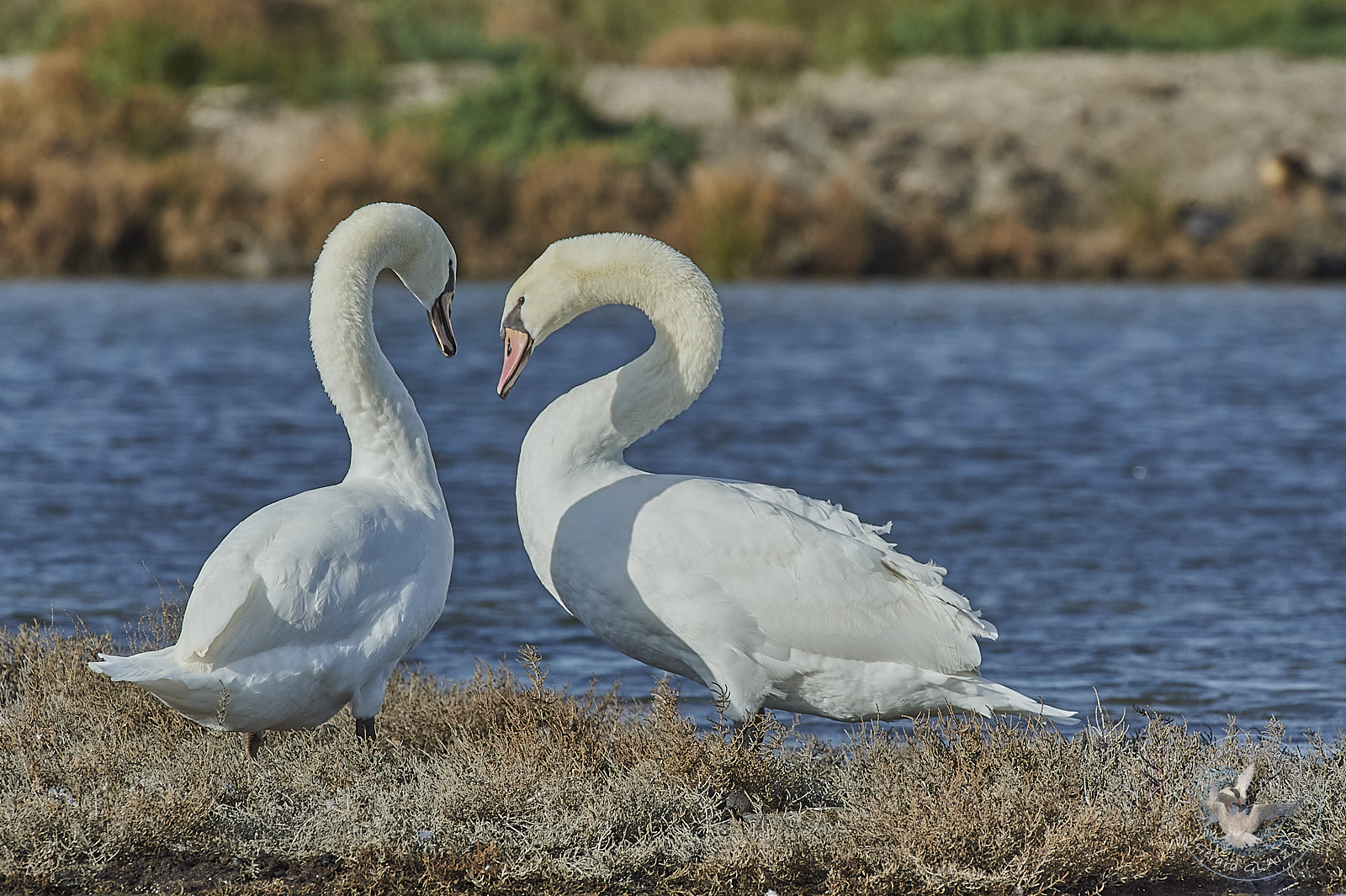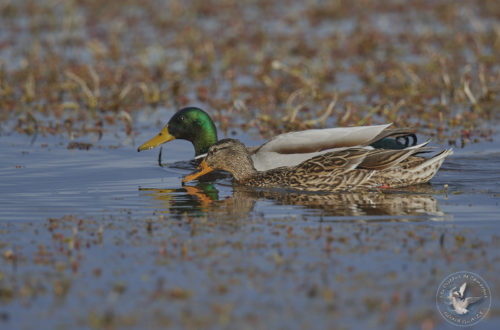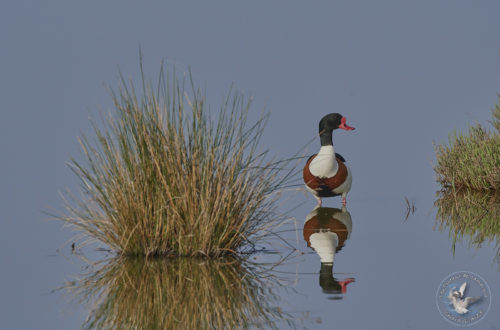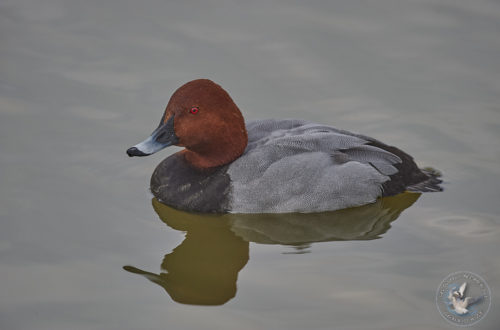Mute Swan
Last updated on November 15th, 2023 at 06:40 pm
Mute Swan is a species of bird in the Anatidae family. Its name comes from the bump it has on its beak, called a tubercle. Its plumage is immaculate white. Eyes are hazel in color. Beak is orange with a black tab at the end. The short, webbed legs are blackish.
The two sexes are identical, except in spring: the tuber is then larger in the male than in the female. In juveniles the plumage tends towards grey.
Mute Swan
Scientific name : Cygnus Olor
Family : Anatidae
Long. de 125 à 170 cm, Env. de 210 à 240 cm
Weight : de 9.000 à 13.000 gr
Flight
It is one of the heaviest birds able to fly in Europe along with the Dalmatian Pelican and the Great Bustard. Its flight is laborious and powerful. Shaking its large wings, it needs to run for a distance of 8 to 20 meters before it can take off. It flies with neck and head well stretched forward. Each flapping of the wings produces an undulating, sonorous rustle when in flight, and this sound can be heard several hundred meters away.
Habitat
It is found on all bodies of water in Europe. In the wild, the mute swan needs a fairly large territory (1.5 to 4 hectares), which can include a small lake or an entire pond. Mute Swan is aggressive towards intruders on its territory.
Regime – Diet
The mute swan feeds mainly on plant matter. It grazes in grassy areas and wet meadows. It does not disdain molluscs or aquatic insects, captured with the help of its beak capable of filtering the mud through the slats.
Nesting
Both parents build the nest. This is placed on a mound made of branches built in shallow water in the middle or at the edge of various bodies of water: lakes, rivers, ponds, parks. The nest is made of reeds and roots of aquatic plants and the interior is covered with fine plants, feathers and down.
The female lays from 4 to 8 eggs at the rate of one egg per two days. This mainly provides brooding, which lasts 34 to 41 days. Chicks are precocial and go to water immediately after hatching. Both parents raise the young together. The female broods the cygnet which often ride on the backs of the adults, and more often on the female. Juveniles can move in groups but pairs are monogamous. The Mute Swan can become aggressive, especially during the nesting period.
Protection
Lead contamination at the bottom of lakes and ponds threatens the Mute Swan. It is one of the wild species susceptible to the H5N1 strain of the virus responsible for avian influenza.
Its populations are stable, and it reproduces however very well in captivity or semi-captivity.
The mute swan is one of the species for which the protection measures granted by the Agreement on the Conservation of African-Eurasian Migratory Waterbirds and the Ramsar Convention apply.
In France, although this species is classified in the list of protected species, the form immutabilis or Polish white swan is classified in the list of domestic animals by the Ministry of Ecology, Energy, Sustainable Development and l ‘Territory Development.
Cry
The Mute Swan is usually silent. He is almost mute (hence his English name of “Mute Swan”). Mute Swans are less vocal than Whooper Swans and Tundra Swans. The sound most associated with this species is the sound of its wings in flight, audible up to two kilometers away.
Useful Links
Other Links
- You can see the article from my site “Birds of Camargue” for more information on the Camargue and the Birds.



